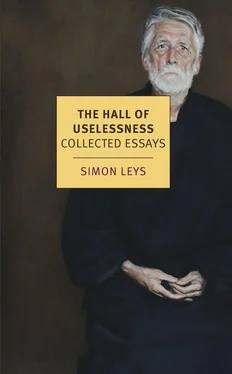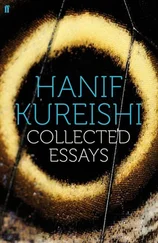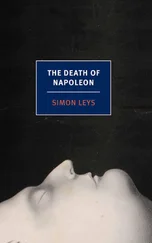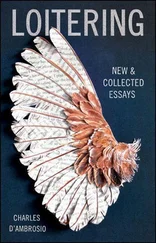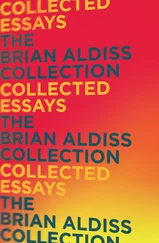In fact, the imperial collections never entirely lost their archaic role of legitimising political authority. It is remarkable to see how this function has actually survived until today. Chiang Kai-shek, who was never particularly noted for his artistic inclinations, diverted considerable resources and energy in a time of acute emergency in order to have the former imperial collections removed to Taiwan just before he had to evacuate the mainland. By doing this, it was generally considered that he had secured a fairly substantial support for his claim that he still was the legitimate ruler of all China. At the time, Peking experienced this move as a bitter political setback, and the presence of the imperial collections in Taiwan has always remained a very sore point for the People’s Republic. The Communist leaders too can hardly be suspected of much aesthetic indulgence — and yet, as soon as they assumed power, they immediately attempted to rebuild an “imperial” collection in Peking — partly by “inviting” private collectors to contribute their paintings (in a fashion quite similar to the Tang episode evoked earlier), and partly by buying back, at great cost, some ancient masterpieces of Chinese art on the international art market.[8]
All through history, imperial collections achieved an extraordinary concentration of ancient masterpieces, amounting at times to a virtual monopoly over the artistic heritage of the past. Two important consequences resulted from this situation.
1. Without access to the imperial collections — and only a very small number of high-ranking officials enjoyed such a privilege — it was practically impossible for most artists, aesthetes, connoisseurs and critics to acquire a full, first-hand knowledge of ancient art. On this subject, even historians were dealing mostly with abstract concepts, unverified stereotypes and literary information.[9] Sifting through the vast literature of connoisseurs’ notes, one is constantly struck by the fact that, when the writers refer to ancient paintings which they personally had the chance to examine, these works are seldom more than 200 years old. Moreover, it is not uncommon to come across influential critics and collectors who confess that they hardly ever saw any works by famous artists who lived barely one century before them.[10] (This situation provided ideal conditions for a thriving industry of art forgery — another important topic that unfortunately cannot be covered here.[11])
2. It is mostly because each dynasty achieved a huge concentration of art treasures that China’s heritage repeatedly suffered such massive losses. The fall of practically every dynasty entailed the looting and burning of the imperial palace, and each time, with one stroke, the cream of the artistic production of the preceding centuries would vanish in smoke. The stunning extent of these recurrent disasters is documented in great detail by the historical records.[12]
Here, a side comment could be made. We must lament the grievous losses that were inflicted upon the cultural heritage of China — and of mankind — and yet, we may wonder if there was perhaps not some relation between the inexhaustible creativity displayed by Chinese culture through the ages and the periodic tabula rasa that prevented this culture from becoming clogged up, inhibited and crushed under the weight of the treasures accumulated by earlier ages. Like individuals, civilisations do need a certain amount of creative forgetfulness . Too many memories can hinder intellectual and spiritual activity, as it is suggested in a well-known tale by Jorge Luis Borges, describing the ordeal of a man who cannot forget anything. A total, perfect, infallible memory is a curse: the mind of Borges’s character is turned into a huge garbage heap from which nothing can be subtracted, and where, as a result, no imaginative or thinking process can take place any more — for to think is to discard.
IDEOLOGICAL BACKGROUND:
THE CULT OF THE PAST IN CHINESE THOUGHT
As we have just noted, Chinese antiquarianism remained limited both in time (it appeared late) and in scope (it was mostly concerned with the diverse manifestations of the written word).
These limitations may seem paradoxical when we consider that two important cultural factors ought apparently to have produced an environment particularly conducive to antiquarian pursuits. These factors are:
1. that China’s dominant ideology — Confucianism — extolled the values of the past; and
2. that China from a very early age developed an extraordinary sense of history — it actually possesses the longest uninterrupted historiographical tradition.
On the question of the Confucian cult of the past,[13] two significant qualifications should be made. First, in ancient Chinese thought, the cult of the past was far from being a universal dogma. The quarrel between the “ancients” and the “moderns” occupied a considerable part of the philosophical debates in pre-imperial China — the most creative period in the history of Chinese thought. At the end of that period, the modern school gained the upper hand, thus providing the ideological framework for the establishment of the first Chinese empire. (In fact, the notorious initiative of the first emperor, who decided “to burn the books and bury the scholars alive,” marked the gruesome climax of this movement to obliterate the past.) Shortly before, the last (and most agile) of the great exponents of Confucianism, Xun Zi, had come to terms with “modernism” and accommodated the Confucian tradition to the prevalent trends of the time.[14]
Secondly, it is true that Confucius considered antiquity as the repository of all human values. Therefore, according to him, the sage’s mission was not to create anything anew but merely to transmit the heritage of the ancients. In actual fact, such a program was far less conservative than might first appear (Confucius himself played a revolutionary role in his time): the antiquity to which he referred was a lost antiquity, which the sage had to seek and practically to reinvent . Its actual contents were thus highly fluid and not susceptible to objective definition or circumscription by a specific historical tradition. Similarly, in later periods, nearly all the great Confucian reformers in Chinese history used to invoke the authority of the ancients to condemn modern practices — but what was meant by these semantic conventions practically amounted to the exact opposite: their so-called antiquity referred to a mythical Golden Age — actually their utopian vision of the future —whereas the so-called modern practices referred to the inheritance of the recent past; that is, in fact, the real past .
On the question of the great historiographical tradition of China and the unique awareness of history developed by Chinese culture, only one basic observation should be made here, in direct connection with our topic. It is true that China produced from a very early period a magnificent historiography. Two thousand years ago, Chinese historians already displayed methods that were remarkably modern and scientific; this, however, should not lead us to misunderstand their objective, which remained essentially philosophic and moral.
From a very early stage — well before Confucius — the Chinese evolved the notion that there could only be one form of immortality: the immortality conferred by history. In other words, life-after-life was not to be found in a supernature, nor could it rely upon artefacts: man only survives in man — which means, in practical terms, in the memory of posterity, through the medium of the written word.[15]
This brings us back to our starting point, Segalen’s poetical intuition that Chinese everlastingness does not inhabit monuments, but people. Permanence does not negate change, it informs change. Continuity is not ensured by the immobility of inanimate objects, it is achieved through the fluidity of the successive generations.[16]
Читать дальше
